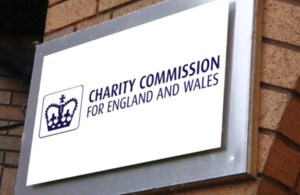Who is affected by the decisions of the Charity Commission?
Stephen Roberts, Head of Legal Policy and Litigation.

A wide range of Charity Commission decisions can be challenged on an appeal to the First Tier Tribunal (Charity) by a “person who is or may be affected by the decision” including making a scheme, the removal of a trustee, and a decision not to remove a charity from the register. However, there is no statutory definition of the “person affected”.
The test of whether a “person who is or may be affected by the decision” has some similarity to the test of “sufficient interest” for judicial review. In Inland Revenue Comrs v National Federation of Self-Employed and Small Businesses Ltd - [1981] 2 All ER 93 the Court of Appeal in a judicial review case considered the difficulty of distinguishing between the desire of the busybody to interfere in other people’s affairs and the interest of the person affected by or having a reasonable concern with the matter to which the application relates.
In R (ex p. International Peace Project) v Charity Commission for England and Wales [2009] EWHC (admin) 3446 Lord Carlisle of Berriew sitting as a Deputy Judge of the High Court considered the meaning of the term “person affected”. In this case a charity with aims of education to promote securing a state of peace objected to the registration of a charity with the object of education in the aims of the Atlantic Treaty. He stated:
A person who is or may be affected, in my judgment, means someone who has an interest that is materially greater than, or different from, the interests of an ordinary member of the public. This is a question of fact rather than a question of law. My conclusion would be that the claimant is not a person who is or may be affected because there is no relationship between the claimant and the registration of the defendant, other than that of just another charity. The claimant happens to be interested in the subject area and objects of the other charity and does not agree with the conclusion of the Charity Commission, but in my judgment that is insufficient to bring the claimant within the relevant category.
The First-tier Tribunal (Charity) has considered the issue on two occasions although its decisions are not legal precedents. In the first case Lasper v Charity Commission CA/2010/0006 the Judge stated that “in my judgment the threshold for establishing sufficient standing to bring judicial review may well be a lower threshold than that required by the wording in column two of Schedule1C” (“person who is or may be affected….”).The Judge also considered that someone who did not qualify as an affected person might become one if the Charity Commission engaged with them without taking issue with their standing.
In Colman v Charity Commission (CA/2014/0001 and 0002) the Principal Judge considered whether an appellant who had resigned from being a trustee was a person who is or may be affected by an order appointing an interim manager of the charity or by a direction to some banks not to part with property of the charity. The Judge identified the issues relevant to considering this issue. In particular, Lord Carlisle’s formula was not determinative of all questions on standing but was a good starting point for assessing the merits of a particular case.
The Judge considered it would be necessary for the tribunal to look carefully at the nature of the decision that it is sought to appeal and at all the surrounding circumstances. In these cases the Judge took into account
(i) the fact that the appellant was no longer a trustee when the appointment of the interim manager was made (similarly in the second of the appeals the appellant was no longer a trustee at the date of the direction to four banks not to part with property of the charity);
(ii) the alleged risks to the appellant’s finances and reputation would remain in place even if the decisions were quashed. This was because they related to the inquiry rather than these two decisions made within it;
(iii) in view of (i), the decision and orders being appealed had no impact on the appellant’s legal rights.
This decision similarly is not a legal precedent. However, it is indicative of the approach the First-tier Tribunal (Charity) takes to these issues. It is likely that the factors as to whether a person is affected will vary depending on the nature of the decision. A significant number of the cases which have been taken to the First-tier Tribunal have appellants other than the relevant charity or its trustees.
This article was first published in Solicitors Journal in July 2014.